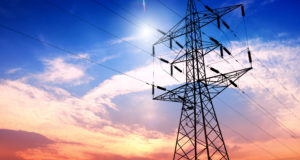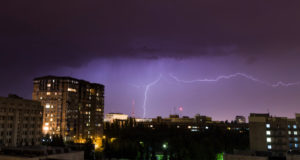Few home features will make more of a favorable impression than a properly installed, well-maintained wood-burning fireplace. Pick whatever adjectives you prefer – comforting, stylish, traditional, inviting, romantic, picturesque, etc. – but however you choose to describe it, there is just something about a centrally located fireplace that adds an element of class to any home it occupies.
 If you are planning to construct a new house or are thinking about remodeling the old one, a fireplace might be one of those features that you just can’t live without, or at least, don’t want to live without. However, while almost everyone would agree that a fireplace has certain undeniable charms, you may have heard some things about them that would tend to give you pause. For example, you may have read somewhere or been told that fireplaces are messy and difficult to clean and that they can present a significant fire risk. You may also have heard that they are drafty during the winter, and that even when they are burning brightly you may still lose more heat through your chimney than your fireplace can actually produce.
If you are planning to construct a new house or are thinking about remodeling the old one, a fireplace might be one of those features that you just can’t live without, or at least, don’t want to live without. However, while almost everyone would agree that a fireplace has certain undeniable charms, you may have heard some things about them that would tend to give you pause. For example, you may have read somewhere or been told that fireplaces are messy and difficult to clean and that they can present a significant fire risk. You may also have heard that they are drafty during the winter, and that even when they are burning brightly you may still lose more heat through your chimney than your fireplace can actually produce.
In response to all of these ugly rumors, all we can say is that the bad stuff you have heard about fireplaces is actually 100 percent true – but only under certain circumstances. The problems come because most people are so used to the casual, maintenance-free convenience of modern technology that they are just not prepared for something that requires real care and attention. Fireplaces can be highly efficient and manageable or incredibly wasteful and in constant need of cleaning or repair, and the difference will be based on the amount of time, effort, and attention (and sometimes money) you are willing to invest to make sure your fireplace becomes a truly positive addition to your home.
Eliminating Fireplace Waste: The Basics
People have been putting fireplaces in their homes for centuries. But there is a fundamental problem with this technology, and that is the fact that most of the heat they produce has a tendency to go straight up the chimney and out of the house, providing no benefits to those who are gathered around the fire seeking warmth. Curiously enough, roaring blazes are the least efficient type of fire, because the vigorous drafts of oxygen flow they create will suck the warmth out of the surrounding environment and send it up the chimney along with most of the heat produced by the fire. So while it may feel nice and toasty when you are up close to the flames, the rest of the house will actually be getting colder thanks to the energy vampire that is occupying the center of your home.
Ideally, what you want is a fire that will burn at a consistently moderate intensity, hot enough to consume its fuel steadily without producing smoke. No matter how chilly you feel, you must resist the temptation to keep ramping up your fire more and more until it is consuming wood faster than you can feed it. This may seem like the best way to heat your home quickly, but in fact you will be doing just the opposite, as your furnace or space heater will be forced to work harder and harder to keep up with what is being sucked up your chimney and vented out into the night air.
Of course, even if it is not draining the surrounding atmosphere of warmth, a moderate intensity fire will still tend to send the majority of its heat up the chimney. Fortunately, there are some steps you can take that will help to ameliorate this problem. Metal plates made of heavy cast iron (firebacks) or reflective metal (fire reflectors) can be placed in the back of a fireplace, where they will be able to capture heat before it can be carried away up the chimney by air drafts. These metal masses will then steadily re-radiate or re-direct that heat back into the house where it is needed. To further trap the heat, glass doors with adjustable openings, sealed tight around the edges, can be placed across the front of a fireplace, where they will cut off much of the air flow that would normally sweep most of the hot air from the fire up and away. While some may feel this makes a fireplace seem less authentic or less attractive somehow, vented glass covers can be quite effective at controlling and regulating air flow and heat exchange.
The heat-circulating grate is an ingenious invention that takes a more aggressive approach to hot air preservation. These steel pipe grates use a two-way fan that draws cool air in and kicks heated air back out, so that the warm air produced inside the fireplace gets pumped back into the living room in relatively copious amounts. The base of the grate will fit snuggly beneath glass doors if they are installed, and heat-circulating grates can be purchased with thermostats and variable-speed fans to help regulate atmospheric temperatures more effectively.
Slash Your Lighting Bill By 90%…And Never Change A Light Bulb Again!
Wood stoves are more effective at heating interior spaces than fireplaces, but of course they are nowhere near as attractive or aesthetically pleasing. However, inserts are one possible solution that could allow you to take advantage of wood stove efficiency while still preserving at least some of the joys of the fireplace experience. Fireplace inserts fit right into the open hearth, and because they actually extend out into the room, they will radiate a greater percentage of the heat they produce into the home than a regular fireplace ever could. Inserts have small windows in the front that will allow you to watch the fire as it burns, but of course this is not exactly the same as sitting in front of a crackling open blaze, which many consider to be an irreplaceable part of the fireplace experience.
Naturally, when there is no fire burning during colder weather, it is important to cover the chimney with a damper. A damper assembly sealed with silicon caulking that can be opened or closed with cables that hang down near the fireplace and exhaust fans used as chimney caps can help remove smoke while fires are burning and then act quite effectively as dampers when they are turned off. One really neat type of chimney damper is an inflatable clear plastic pillow that can either be blown up or deflated quickly from inside depending on need.
One mistake that people often make with chimney dampers is that they leave them open for a while after extinguishing a fire. As a result, the heat that has been absorbed by the chimney and the fireplace, which are normally constructed of materials that have high thermal mass, is allowed to escape instead of being re-radiated back into the home.
Fireplace Cleaning And Maintenance: Learning The Tricks Of The Trade
Actually, there is nothing tricky at all about proper fireplace cleaning and maintenance. You just need to be proactive enough to make sure your fireplace and chimney are checked at least once a year (or maybe twice annually just to be sure) for physical damage and excessive creosote accumulation. The best time to check is either just before or just after you plan to start using your fireplace regularly (in early fall or late spring, most likely), and any time you find creosote buildup of more than 1/8 of an inch, it is definitely time for a cleaning.
If you use your fireplace frequently, then it is probably a good idea to just go ahead and hire a local chimney sweep to come once a year during the off-season to clean out your whole system, from fire pit to chimney to damper, and you should also examine the fireplace and chimney once or twice on your own during the burning season to make sure things are all right. If you use your fireplace irregularly, then it should be okay to base your decision about whether to have it cleaned on the amount of creosote you find during off-season checkups. Just remember that creosote is highly flammable, and if you value your home, you should not under any circumstances let it build up to a depth of greater than 1/8 of an inch. For those who want to save some money, there are do-it-yourself chimney and fireplace cleaning kits available, but if you take that route, know ahead of time that you will be tackling a very messy job.
In addition to keeping your fireplace system free of creosote, you will also want to make at least one annual inspection to make sure there is no excessive wear or cracks developing that could compromise the structural integrity of the stone or brick in your fireplace and chimney. The masonry used to construct fireplaces is quite durable, but nevertheless, problems can develop, and if you never bother to look closely you could get a great shock one day when your fireplace or chimney suddenly starts to crumble right before your eyes.
Home, Hearth, Heat, And Happiness
From the standpoint of pure efficiency, the fireplace will never get the highest grades as an indoor heating option. The additions and precautions we’ve been discussing here will enable you to harvest a more reasonable percentage of the heat your fireplace produces, but if you live in a climate where wintertime temperatures routinely drop below freezing even during the daytime, you will probably want to use your fireplace most frequently in the fall or early spring when it is cold but not overwhelmingly so.
Having a fireplace is about much more than just staying warm, however. For off-the-gridders especially, it is always wise to maximize efficiency, but even those who are dedicated to preserving energy and resources should have the chance to experience the good life at least some of the time, and this is really what having a fireplace is all about. As long as you take steps to make sure you are not wasting excessive amounts of energy, a fireplace can convert a normal living room into a fantastically comfortable and attractive place to relax and spend time, and this is something that should appeal to just about everyone no matter what kind of lifestyle that have chosen to pursue.
©2012 Off the Grid News
 Off The Grid News Better Ideas For Off The Grid Living
Off The Grid News Better Ideas For Off The Grid Living




